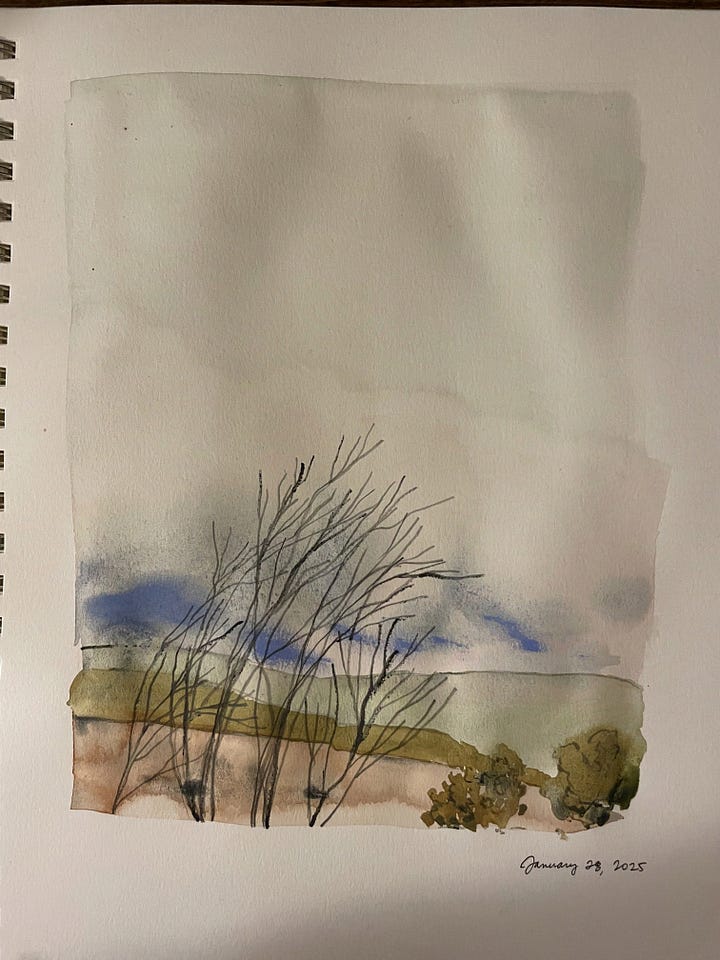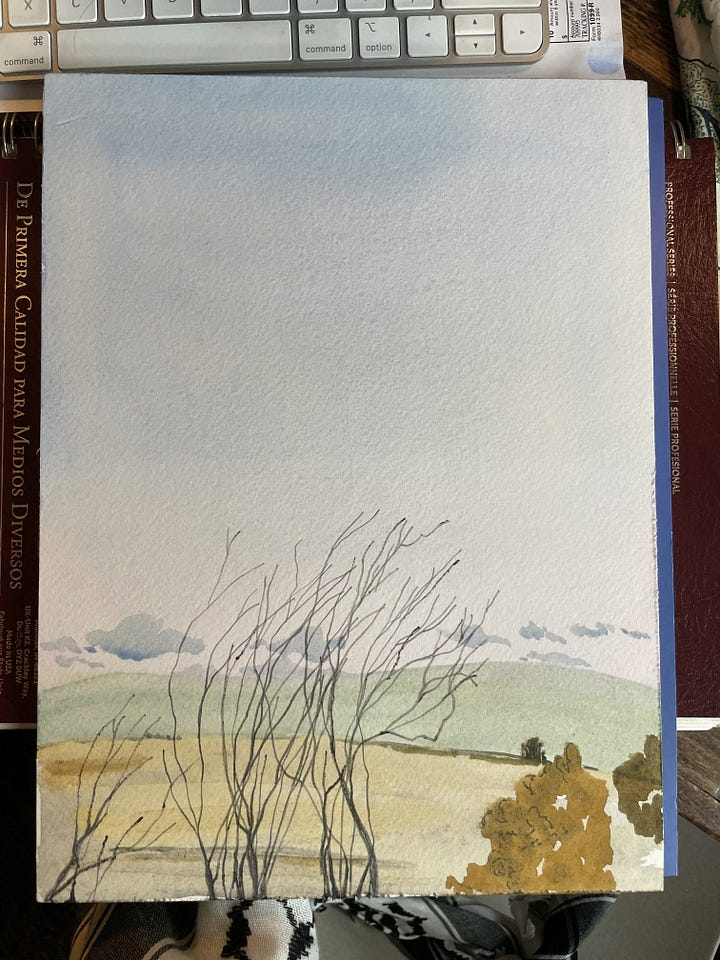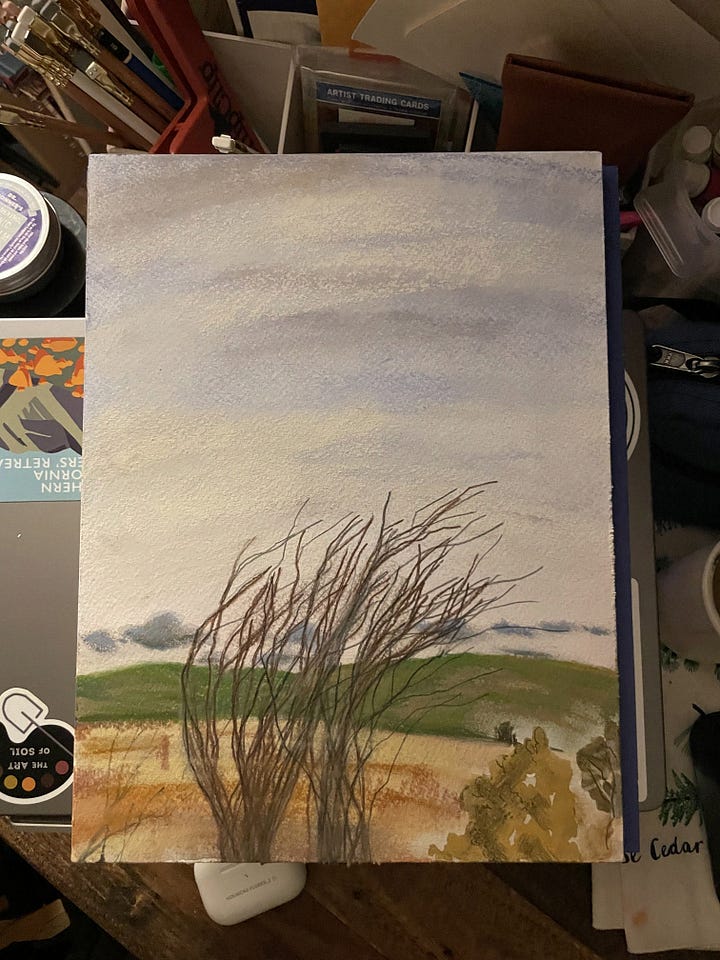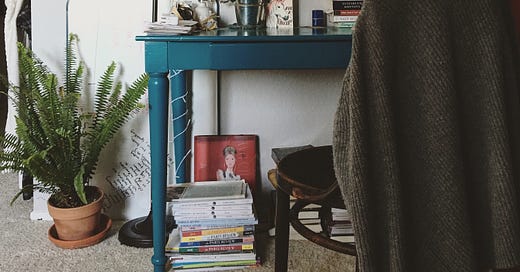When I started drafting my first novel in 2016, I felt this annoying push to get to the end. As though, in having a book-length manuscript, I would have reached my goal, no matter how incomplete that long draft actually was in terms of plot, character development, or myriad other literary elements. I wrote to that book-length end, and in so doing, dug myself a creative ditch, at least with regards to that project.
During the years after that first “complete” manuscript, I wrote a second, very different book with a very different end in mind. Instead of a book-length manuscript, my goal had become to have a complete story. One that would propel readers through the much shorter number of pages to a final scene that the narrative itself had brought about.
I don’t mean that in some mystical way, but that in the process of doing a lot of behind-the-scenes work (figuring out character details, backgrounding, scene-building) I had learned enough about the novel’s drive, its people, that the end began to feel inevitable, even to me: its creator.
The long act (two years, in this case) of writing this second book helped me to see just where I’d gone wrong with the first one. And allowed me to do something I never thought I’d do: begin to rewrite my first novel. From scratch.
As I was writing the second book, I learned that I liked to set the story down in layers. That first, it was important for me to get scenes — even just the germs of scenes — down on paper, so that I could then go back and build them out. I got comfortable with the awkwardness of the first drafts and, instead of only trying to perfect the wording as I edited, I was also thinking about all those other elements of a functional book—themes, pacing, dialogue, character development, etc.
There’s a lot of inspirational talk about messing up to get somewhere, but this hasn’t ever resonated with me because it feels like a false consolation—a way to feel better that doesn’t acknowledge the pain of getting lost. Because I was definitely lost at multiple points from Novel One to Novel Two, and right now, am finding myself quite lost again as I wait out the book submission process.
I have felt similarly lost as I’ve been figuring out how I like to draw and paint, and what I want to make. I don’t anticipate these periods of uncertainty ever stopping. They are a really hard part of carrying out ideas. Of trying to make something that has only existed in one’s head into something a person can hold or read or look at.
The shift I experienced after writing Novel Two is tied up with having done the thing again, and having done it better. It gave me an understanding of my process. It gave me patience for myself and for the ugliness of creation.
I see a similar shift—from a simpler to a more complex understanding of what I want to accomplish and how I want to get there—taking place now in my visual practice.
Since the end of 2024, I’ve been wrestling with how I want to layer my mixed media work. I often find I love the first layer of watercolor, but that the first layer, by itself, feels bothersome and incomplete (much like the bristling and awkward first draft feels when I’m writing fiction). The main issue I’ve been trying to resolve is how to layer over that first wash without detracting from it.
Through my efforts on resolving this and other small issues, I’ve been working through the bigger question of visual balance. How do I want to work so that I can retain the simpler beauty of the first layer (left), while also adding interest, but without making a total mess (right)?
As in fiction writing, visual artwork is very easy to overdo. With each discipline, part of the craft is knowing how to add without losing the freshness that can emanate from those first efforts. Still, part of what has drawn me to mixed media, and what keeps me going back to long fictional projects is the necessity of making messes in order to figure out what works, both for the thing itself and as a process. These kind of processes also, by definition, require more than one kind of art supply, and a longer intellectual commitment, respectively, which make them very, very fun (when I’m not mired in that creative agony, at least).




At first, mixed media just seemed like an imperative to use paint and something else. Technically, a painted pencil drawing is a mixed media piece. But the kind of mixed media process I wanted to create for myself had to go deeper than that. I wanted to have colorful fingertips and a messy desk after engaging in this kind of art-making. I wanted to be deeply in the act of making, like I’d been as a kid.
With this in mind, I started doing a few things.
To free myself up from the concern over a finished piece, I began working from the same scene again and again, trying out different media and seeing the effects I could create. Dealing with the same subject in this repeated way allowed me to compare my results.
I also started working from memory. This has a lot of advantages, but the main one is that it frees me from the tyranny of detail. My memory leaves things out without me having to work at condensing. Repeating the same picture also shows me that sometimes the first, most spontaneous version (top left, in this series) remains my favorite.
I don’t usually work in multiple media at once. I will watercolor or lay down a first layer in pastel, and then, when I feel I’ve gotten as far as I can with that medium, I’ll pick up another that allows me to do something that the previous medium didn’t, or at least didn’t allow for in the way I wanted. Maybe this shift involves taking up a colored pencil to add finer detail, or a piece of charcoal to deepen the piece’s dark values.
As always, I’m also short on time, so some days I practice the things I can. Lately, I’ve been making lots of value studies in different media, to get a better hold of how to create contrast and focus, regardless of what I’m using. Some of them turn out better than others, and this tells me I know the medium a little better. A few examples are below. I did these with a single (dry) Neocolor II and then wet the drawing, going from the lightest to darkest areas (so as not to carry color into the lights). They are both timed copies of Mary Fedden paintings.
If you’re enjoying these posts, could you please like, comment, and/or share? It helps me to know I’m reaching readers, and motivates me to keep going. Thanks.
I’m now in the process of taking my PhD qualifying exams, and will be back in early June. Enjoy the spring.








Reading this feels like a meditation in a space of comfort not because it "feels good" (though it does) but because it make room for it all. The pain, the messy process, the forward movement. I too think of writing as layering, feeling lost in it at times, and scared that it might turn into a muddied mess. Thank you, Sarah.
I always love to see your water colors--it reminds me to pull mine out! Also interested to read about revisiting novel #1, which I think can sometimes be seen as a "practice novel" where a writer is teaching themselves how to complete something!